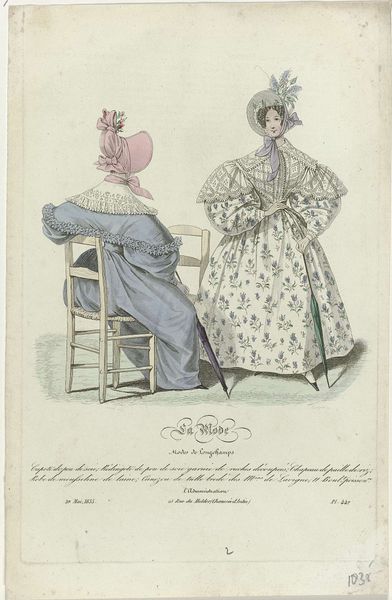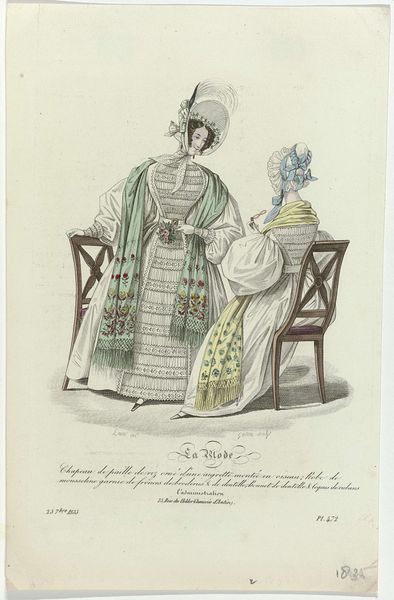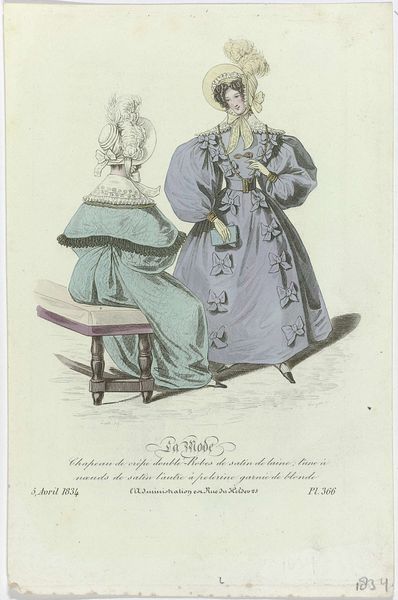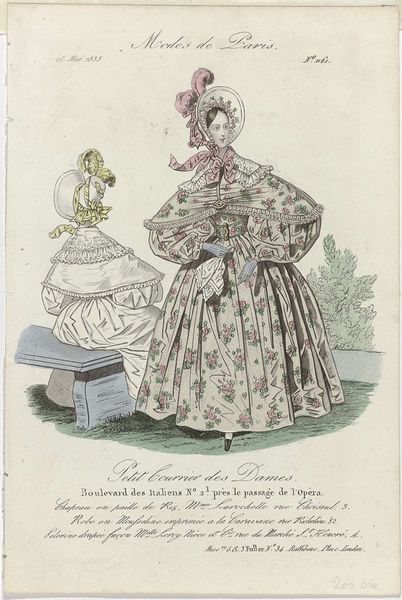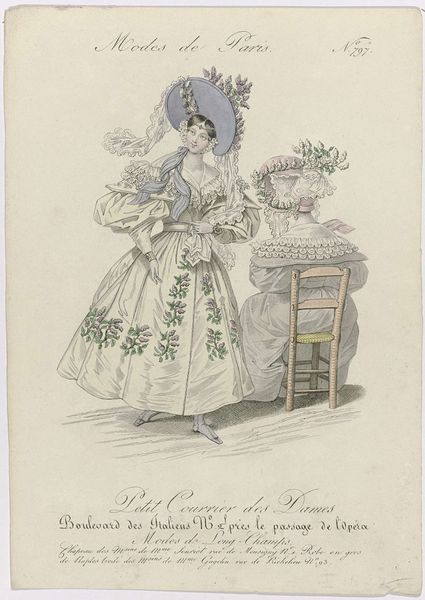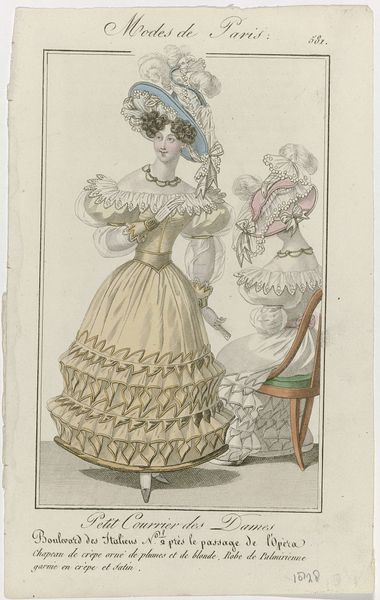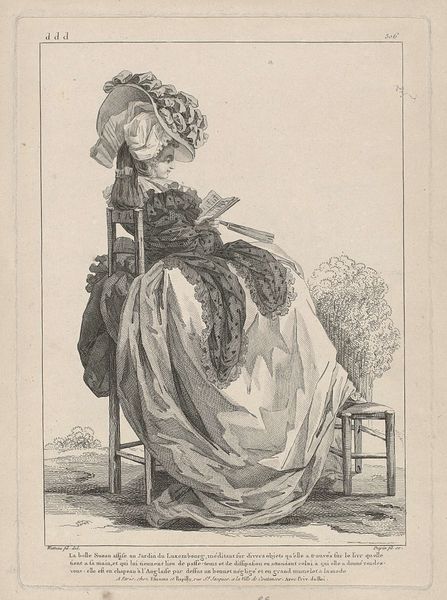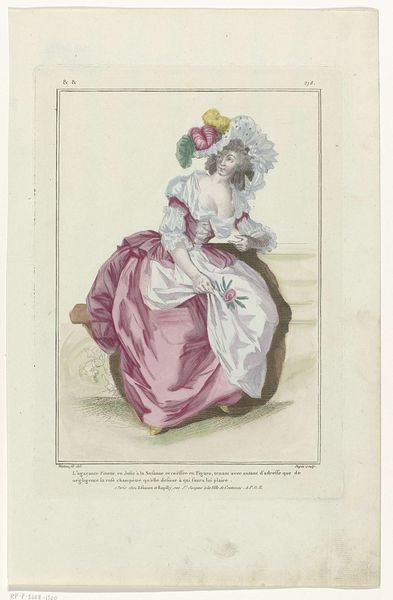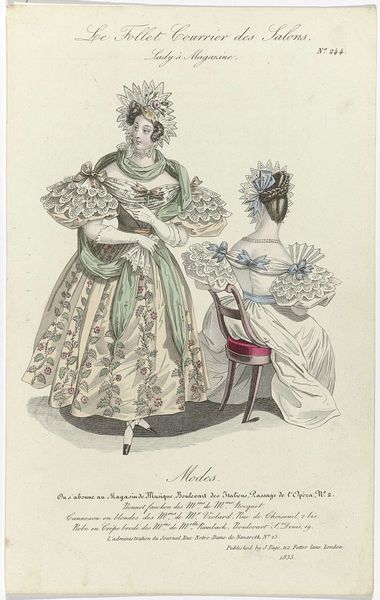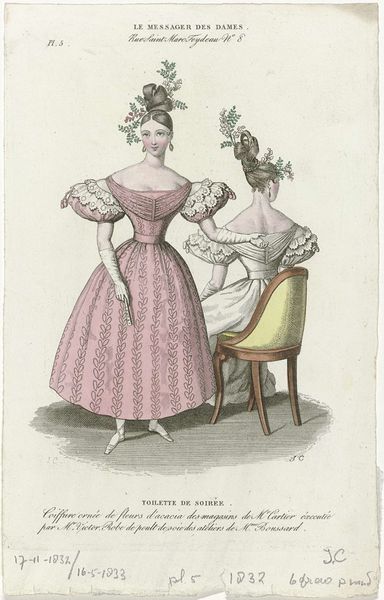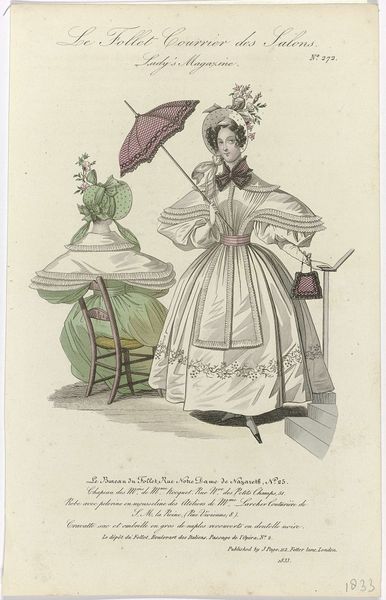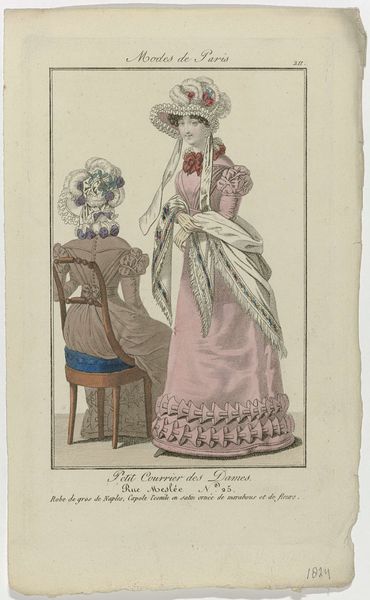
La Mode, 25 août 1835, Pl. 466 : Coiffures ornées de prevenches (...) 1835
0:00
0:00
drawing, coloured-pencil, print
#
portrait
#
drawing
#
coloured-pencil
# print
#
coloured pencil
#
romanticism
#
genre-painting
Dimensions: height 257 mm, width 167 mm
Copyright: Rijks Museum: Open Domain
Curator: Here we have "La Mode, 25 août 1835", plate 466, by Georges Jacques Gatine. It's a colored pencil drawing, a print, actually. What are your initial thoughts? Editor: My first impression is the pronounced contrast! The almost cartoonish volume in the sleeves set against the controlled, contained hairstyles. It feels playful but rigidly structured. Curator: Indeed. These types of prints served a vital purpose; they circulated the latest fashions amongst the elite. Disseminating Parisian style across Europe. These weren’t just images; they were a powerful tool in solidifying Paris as the fashion capital. Editor: I see how the puffed sleeves, accentuated waist, and flowing skirt are balanced so carefully within the frame. And look at the detail in the fabric's rendering—those soft folds and the contrasting lace at the hem. How does this emphasis shape our interpretation? Curator: The detail absolutely served to fuel the burgeoning fashion industry. These weren't just aspirational images, but they provided details from which clothes could be replicated. Moreover, the idealized bodies and elaborate scenes reinforced certain societal standards of beauty and class. It creates and perpetuates desire. Editor: That resonates. It strikes me that the gaze isn't direct, almost self-conscious. Are we, as viewers, meant to admire the artistry or simply consume the styles depicted? Curator: Both! The artist wants us to admire the craft but primarily serves to position the consumer into that high societal echelon the women represent. They are more than illustrations. These prints were embedded within a complex socio-economic system that perpetuated ideals and hierarchies. Editor: I appreciate noticing the strategic decisions within the composition, the emphasis on form and the line's crisp quality in a piece ultimately designed for a practical purpose. It feels very characteristic of its period, full of both ornamentation and order. Curator: Understanding these pieces allows one to decode the intricate power dynamics at play in 19th-century society. These drawings teach us not just about fashion but also the social structures. Editor: Indeed, reflecting upon it has reinforced how aesthetics, even in commercial arts, engage with larger questions of culture and aspiration.
Comments
No comments
Be the first to comment and join the conversation on the ultimate creative platform.
